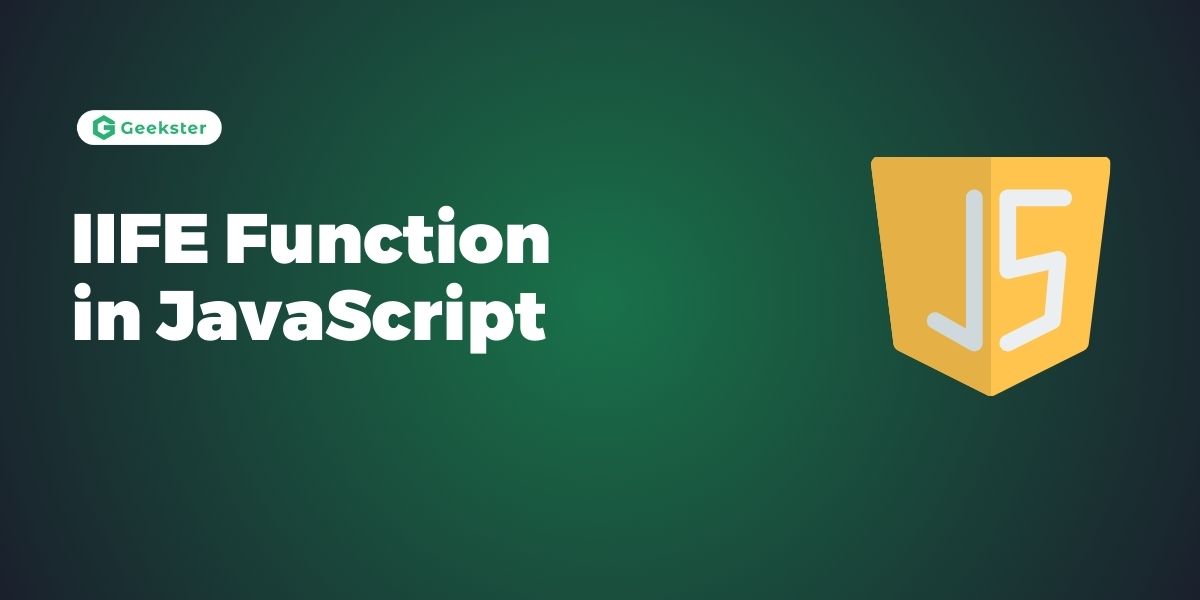Introduction
In JavaScript, an IIFE (Immediately Invoked Function Expression) is a powerful and widely used pattern that allows you to create and execute a function immediately after its definition. This pattern encapsulates code within its own scope, preventing variable pollution in the global scope and enabling more controlled and modular code organization.
Basic Structure and Usage
An IIFE is defined using a function expression wrapped in parentheses, followed by an additional pair of parentheses to invoke it immediately:
(function() {
// IIFE code goes here
})();This syntax ensures that the function is executed right after it’s defined, without needing to be called elsewhere in your code explicitly.
Use Cases
- Encapsulation: IIFEs are commonly used to encapsulate variables and functions, preventing them from polluting the global scope. This is particularly useful in large applications or when integrating third-party scripts.
- Avoiding Variable Collision: By creating a separate scope, IIFEs help prevent variable names from conflicting with those in other scripts or libraries, thus improving code robustness.
- Module Pattern: Before ES6 introduced modules, IIFEs were often used to create modules with private and public methods, providing a way to structure code and manage dependencies effectively.
Execution of Async Functions
IIFEs can also be used to execute asynchronous functions immediately. For example, to handle asynchronous tasks inside an IIFE:
(function() {
async function fetchData() {
// Async function logic
const data = await fetch('https://api.example.com/data');
const result = await data.json();
console.log(result);
}
fetchData();
})();This ensures that fetchData() is executed immediately after its definition, allowing you to manage async operations cleanly within a local scope.
Module Pattern Before ES6
Before ES6 modules became standard, IIFEs were a popular way to achieve encapsulation and create modular code:
var module = (function() {
var privateVariable = 'I am private';
function privateFunction() {
return 'Private function';
}
return {
publicVariable: 'I am public',
publicFunction: function() {
return 'Public function calls ' + privateFunction();
}
};
})();
console.log(module.publicVariable); // Outputs: I am public
console.log(module.publicFunction()); // Outputs: Public function calls Private functionHere, privateVariable and privateFunction() are encapsulated within the IIFE’s scope, while publicVariable and publicFunction() are exposed and accessible outside.
For Loop with var Before ES6
Another common use case of IIFEs was to handle for loops with var, preventing unintended closures:
for (var i = 0; i < 5; i++) {
(function(index) {
setTimeout(function() {
console.log(index);
}, 1000);
})(i);
}In this example, the IIFE ensures that each iteration of the loop creates a new scope for index, preventing it from being overwritten in subsequent iterations.
Conclusion
IIFEs provide a robust way to encapsulate code, manage variable scope, and execute functions immediately in JavaScript. While ES6 introduced modules and block-scoped variables (let and const), IIFEs remain relevant for scenarios requiring backward compatibility or specific scoping needs. Understanding how to use IIFEs effectively empowers developers to write cleaner and more maintainable JavaScript code.
Frequently Asked Questions
An IIFE, or Immediately Invoked Function Expression, executes a function immediately after its definition in JavaScript. It typically encloses the function within parentheses to create its own lexical scope, preventing variables from polluting the global scope.
Encapsulation: Use an IIFE to encapsulate variables and functions, especially when integrating scripts to prevent naming collisions in the global scope.
Async Function Execution: It’s useful for immediately executing async functions, managing asynchronous operations cleanly within a scoped environment.
Module Pattern (before ES6): Before ES6 modules, IIFEs were commonly used to create modules with private and public methods, organizing code in a modular and maintainable manner.
Immediate Execution: Unlike regular functions that require explicit invocation, IIFEs execute immediately after they’re defined.
Scope Isolation: IIFEs create their own scope, which helps in avoiding naming conflicts and improves code maintainability.
Encapsulation: They are effective for encapsulating variables and functions within a local scope, keeping them private unless explicitly exposed.

